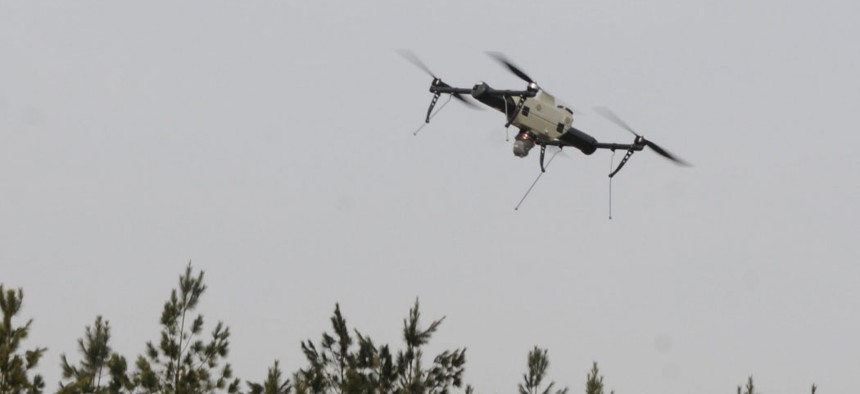Report details the threat of small, commercial drones
A recent report documents the myriad ways non-state groups, from individuals to terrorists to activists, are using unmanned air, ground and maritime systems.
It’s no secret that the military is beginning to take seriously the threat that commercial unmanned aerial systems pose to personnel and military interests. One area of concern, for example, is that the proliferation of inexpensive drones could produce expendable one-way flying bombs. But while aerial drones get most of the attention, they are only one third of the threat, as ground and maritime-based unmanned systems are becoming available. From individuals to terrorist groups, the threat is metastasizing, despite the monopoly the U.S. military has maintained on unmanned technology.
“Although there is still a large gap between the capabilities of military and civilian drones, commercially available drones are giving hobbyists, companies and hostile groups access to capabilities previously only available to the military,” a new report published by the Remote Control Project, based in Britain.
The report detailed a variety of use cases and threats posed by the use of drones:
Lone wolves – Individuals with malicious intent, from those that planned to fly an explosives-laden model aerial vehicle into the Pentagon to the device that landed on the roof of the Japanese Prime Minister’s residence with radioactive materials, are becoming more commonplace. Between January 2013 and August 2015, the report stated, there were 20 suspicious drone related incidents in or around London alone.
Terrorist groups – Terrorist organizations are beginning to utilize drones more and more. While groups such as Lebanese Hezbollah and the Hamas affiliated Al-Qassam Brigades have used drones for years, organizations such as ISIS are using them to a greater degree, including using a remotely controlled car loaded with explosives. These groups are primarily using drones for aerial intelligence, surveillance and reconnaissance on the battlefield – a capability previously unavailable to terrorists that did not possess expensive aerial assets – but are also deploying them for filming propaganda.
Insurgent groups – There has been a heavy concentration of drones recorded in Ukraine since the Russia-linked uprising of separatists against the central government in Kiev. The Donetsk People’s Republic, a Russian-backed separatist group in Eastern Ukraine, as well as the well-known Columbian separatist and terrorist organization Revolutionary Armed Forces of Columbia, known by their Spanish acronym FARC, have deployed drones to improve operations.
Corporations – The report documents select instances in which corporations have used drones to obtain sensitive information as a means of gaining a competitive edge.
Organized crime groups – Cross U.S. border drug syndicates have used drones to smuggle illegal drugs as a means of escaping the ground border patrol agents. A downed drone last year was carrying three kilograms of methamphetamine.
Activist groups – Some activist groups have used drones to support their campaigns, with one group in Germany flying a device close to German Chancellor Angela Merkel.
In order to defend against these threats, the report recommends “a hierarchy of countermeasures encompassing regulatory countermeasures, passive countermeasures and active countermeasures.”
A regulatory approach is the least sensitive and thus easiest to deploy, and could include identifying requirements for purchase and sale above a certain capability level, imposing civil aviation rules and licensing regimes or imposing manufacturing standards and restrictions such as built-in no-fly zones or firmware.
Passive countermeasures against drones in flight can include commercial solutions that track incoming vehicles using a variety of methods to alerts officials, or jamming the signal of incoming drones, although the report points out that jamming can be difficult given the collateral damage it could have on commercial aviation and communications equipment.
Active countermeasures include kinetic means of disabling drones by firing projectiles or deploying laser defense systems that are aimed at mitigating collateral damage. In the continental United States, these measures are typically not permitted, but they can be deployed to military installations globally to protect assets and personnel.
The military, as well as the contracting world, have already begun examining solutions to counter these threats. The Army has adapted and tested a system formerly designed to counter mortars, rockets and artillery to track and shoot down incoming drones with a 50mm cannon. Northrop Grumman has also modified one of its targeting systems that accurately tracks and provides coordinates for fire support to eliminate drones. And the Air Force recently issued a solicitation for a small, portable system to counter small drones.
NEXT STORY: Army adds $97M to Shadow drone deal





